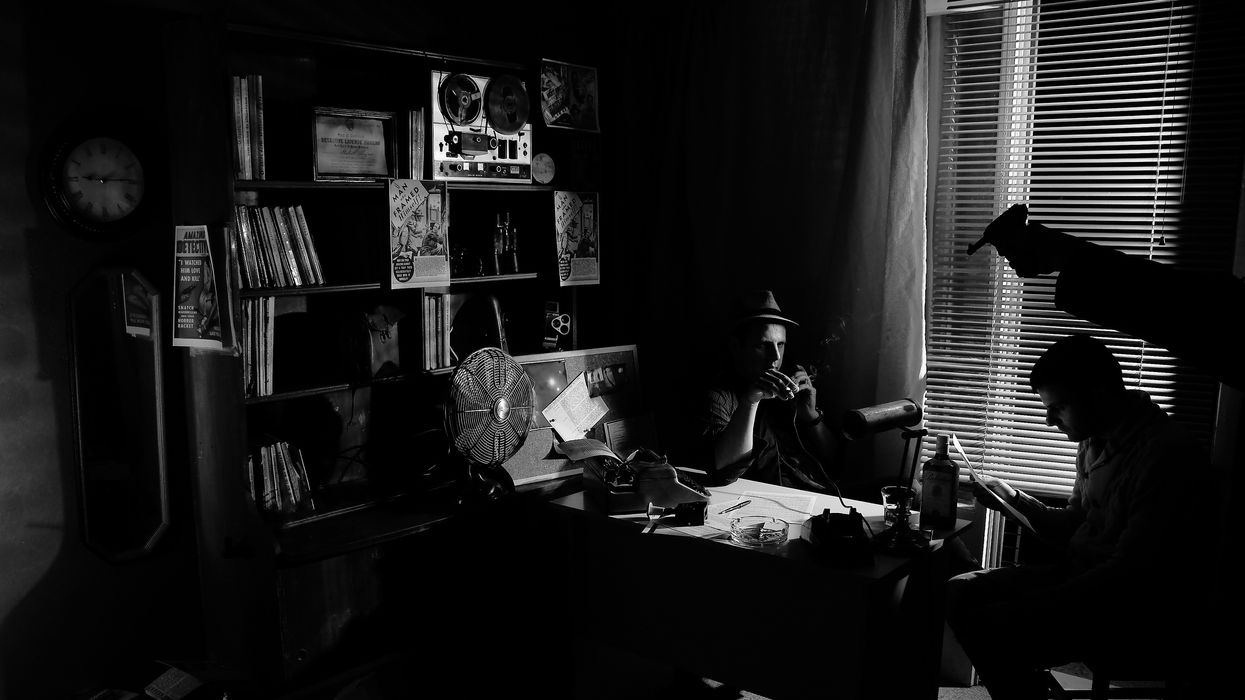How to Get the Film Noir Look on a Budget
What comes to mind when you think about film noir? Darkness? Crime? Venetian blinds?

If you're a fan of this American film movement from the 40s and 50s, then surely many other words and concepts came to mind, but perhaps the most pervasive thing about film noir is its lighting. In this short tutorial, Simon Cade of DSLRguide shows you a cheap but effective lighting setup that'll help you attain the stylized look of film noir.
Even though lighting plays a major role in creating the look of film noir, there are other aspects of the genre that give it its signature, including story content, costuming, set design. But, let's take a look first at the lighting.
Lighting
Film noir has roots in German Expressionism, a film movement that started in the 1920s that was stylistically characterized by sharp angles, represented mostly by its architecture, as well as chiaroscuro lighting. What's chiaroscuro lighting? Essentially its the treatment of light and dark elements of a composition — hard shadows, fast falloff, bold alternations between light and dark.
We see chiaroscuro lighting in virtually every single film noir, from The Maltese Falcon to Double Indemnity. In fact, the whole "venetian blinds" thing became a trope because of 1.) the stylistic shadows they produce, and 2.) the fact that blinds are a perfect symbol for the vast corruption film noir characters try to hide in their films.
But how do you pull off chiaroscuro lighting? Well, it depends on the shooting situation, but as Simon Cade demonstrated in the video, all you might need is one light if you're in a small area. Your light should be bright and focused enough to cast hard shadows on your subject — soft, even light is your enemy with this kind of lighting technique.


Costuming
Is it time to go to your local thrift store and buy up all of their fedoras and three-piece suites? Maybe not — it depends on what kind of "noir" film you're making. If you're going for the classic look for your film noir throwback film (like L.A. Confidential), then by all means get your paws on some fake pistols and spats. But since film noir was a film movement that lasted only during the 40s and 50s, you technically can't make a film noir anymore. (Film classification is weird.) However, neo-noirs are a modern twist on the classic form — think Blade Runner, Mulholland Drive, Memento, and Seven. If you're wanting to make this kind of film, the costuming doesn't have to resemble what it did in the 40s and 50s, though the content, themes, and style are similar, though updated.


Set Design
Perhaps one of the most important things you can do to add dimension to your images (other than lighting) is a great set design. If you compare the shots in Cade's video of before and after he switched the contents on his desk you'll notice how integral props and decor are to not only the tone of your scene, but the story overall. So, take nothing for granted. Every prop and piece can add or take away from your scene/story — they can even play a pivotal role that you never anticipated.
Now, grab a light, a fedora, and go out and make a film noir throwback — or scrap all of that and make a neo-noir — but don't forget the light!
Source: DSLRguide













